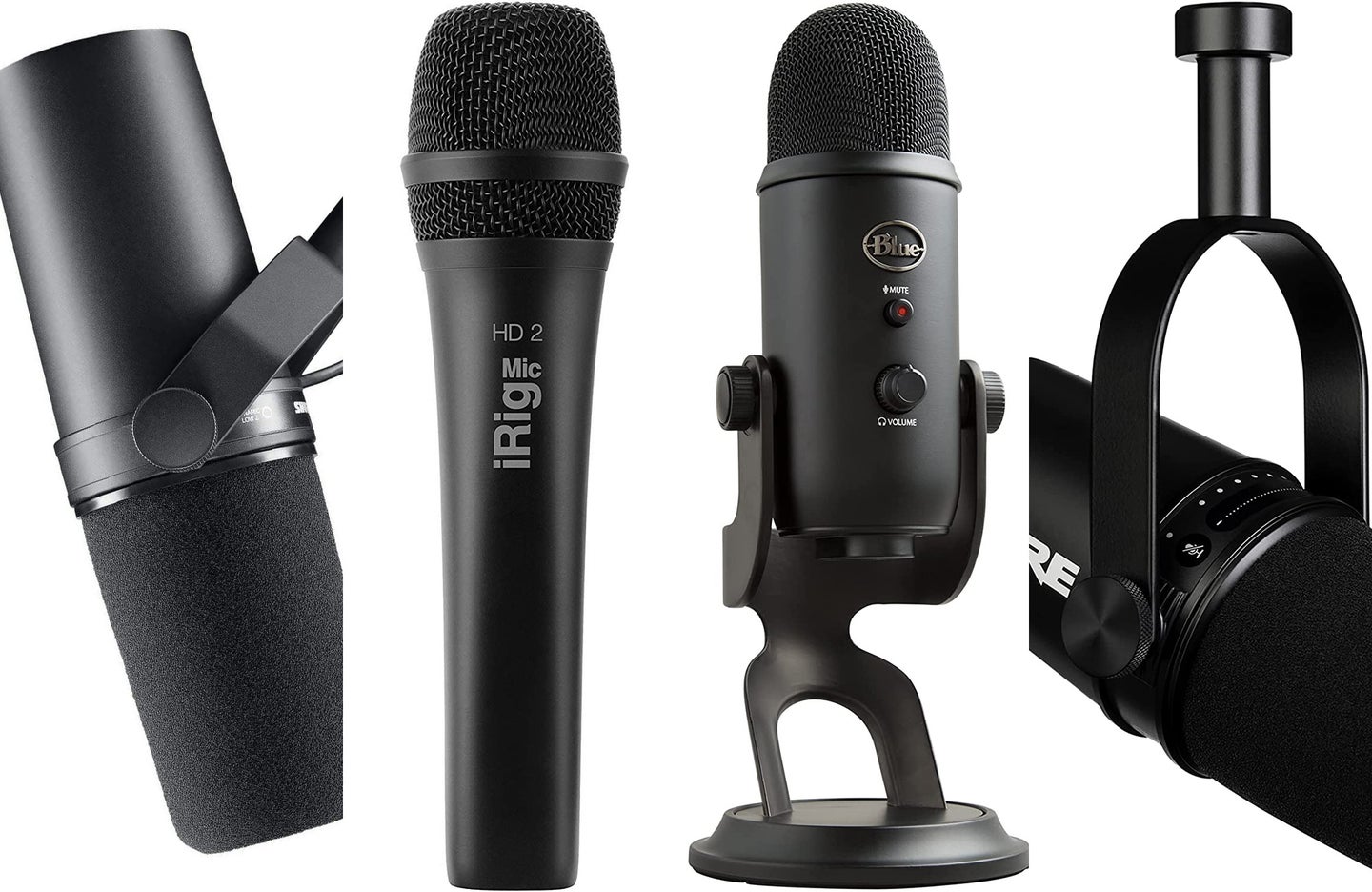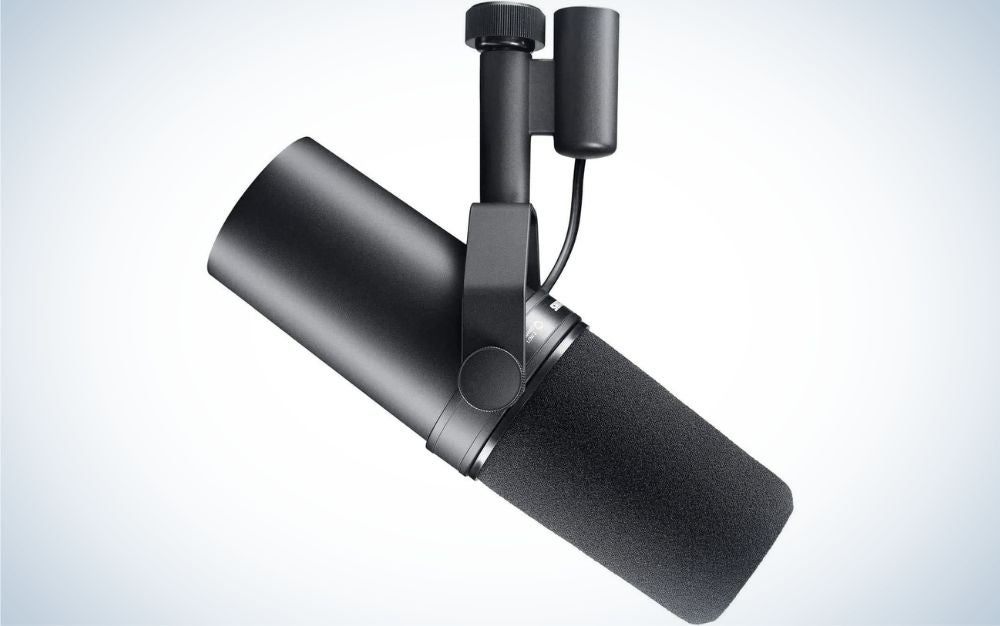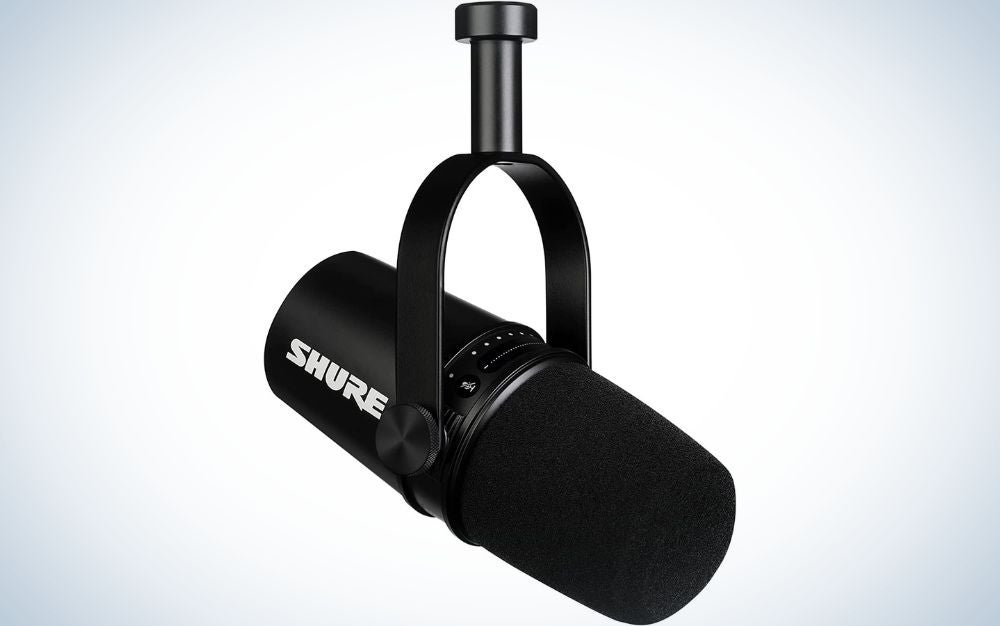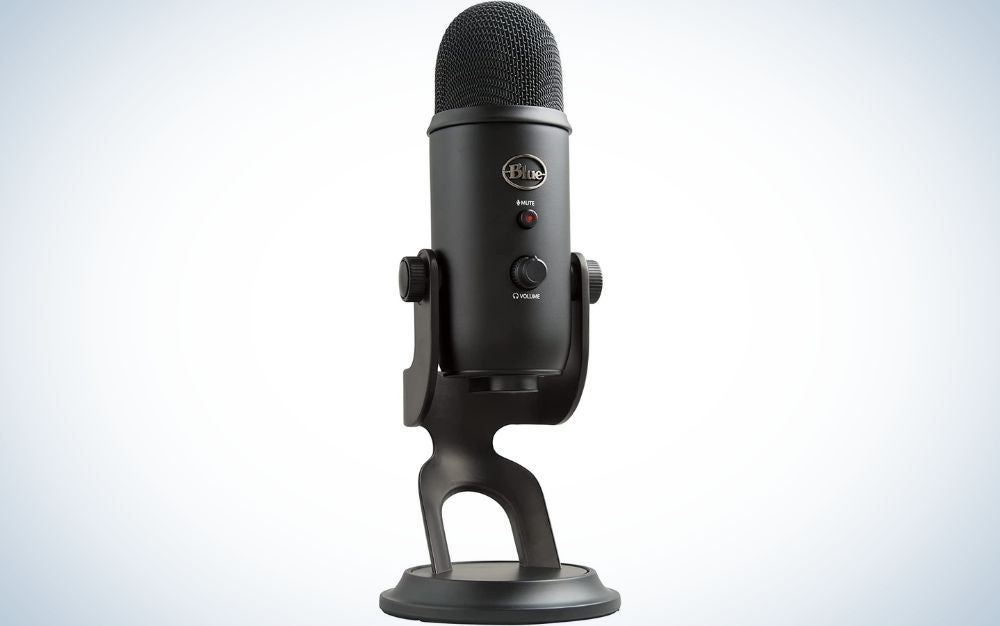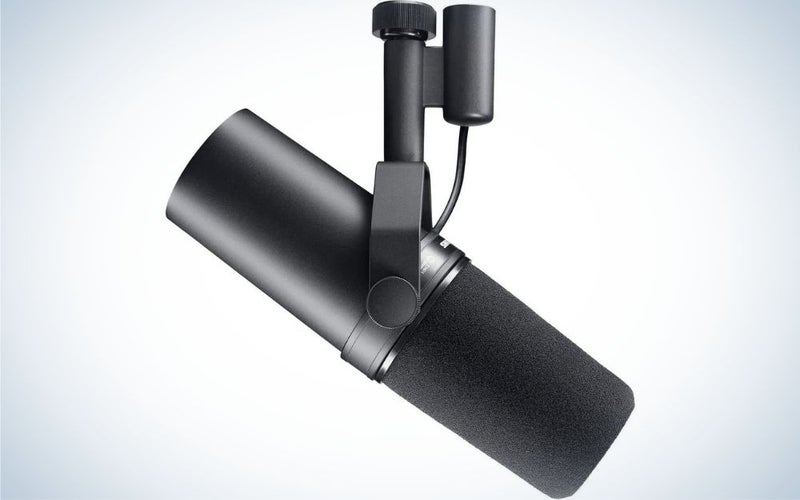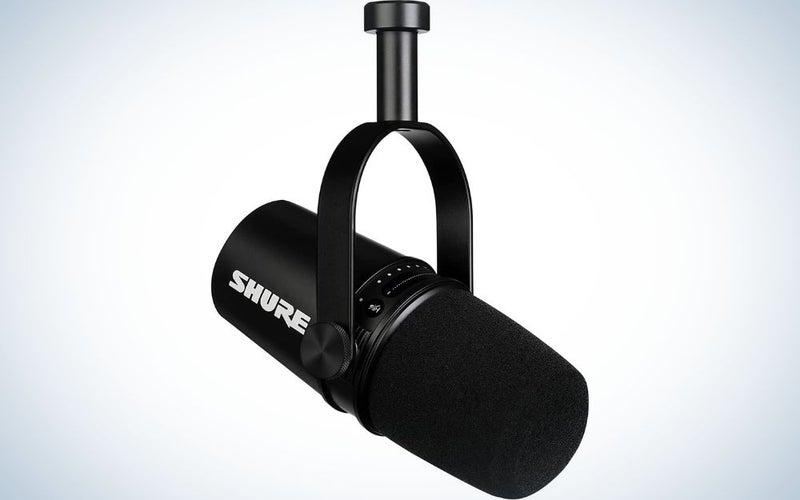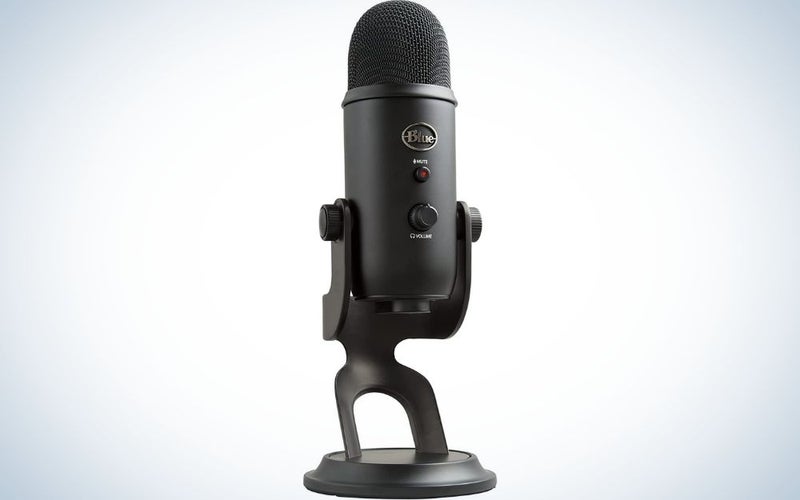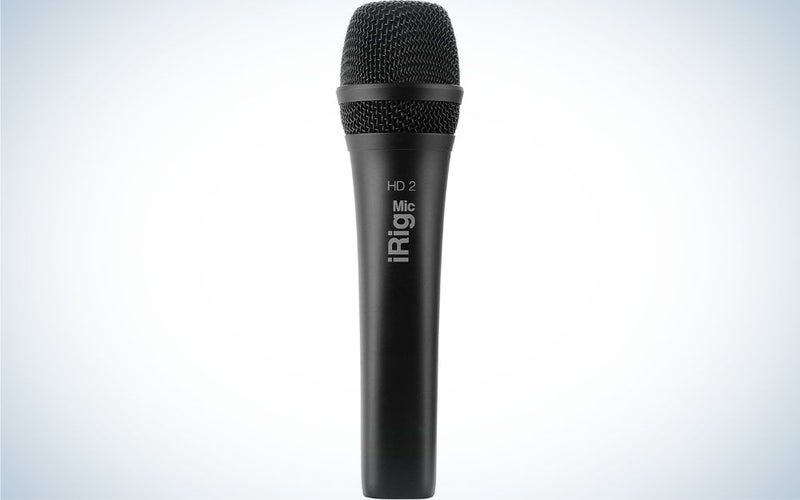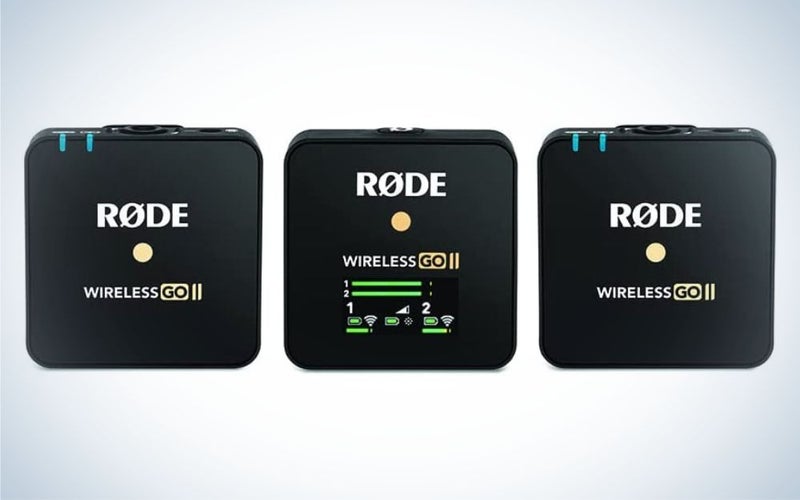We may earn revenue from the products available on this page and participate in affiliate programs. Learn more ›
Microphones for podcasting, like the medium itself, have become more accessible and popular in recent years. Thanks to its adaptability, podcasting has established itself as a mainstay of many brands’ marketing strategies. And this accessibility also brings in a constant flow of new podcasts and podcasters. Many top podcasts start with great ideas, engaging content, and an utter disregard for audio quality. You can capture brilliant conversations on gaming headsets and video conferencing microphones, but they always end up sounding like a Monday morning video call with the office. Whether you’re a beginner or already hosting a popular podcast, high-quality audio will keep your audience listening and help you stand out from the podcasting crowd. We’ve got the best microphones for podcasting to take your recordings to the next level.
- Best overall: Shure SM7B
- Best USB: Shure MV7
- Best for beginners: Blue Yeti
- Best handheld: IK Multimedia iRig Mic HD 2
- Best wireless: Rode Wireless Go
How we picked the best microphones for podcasting
When selecting our picks for the best microphones for podcasting, we have focused on audio performance for spoken word and user experience. For each category, we have considered different use cases and scenarios, highlighting features that will affect recordings with varying types of podcasts. Where appropriate, we have also evaluated construction and materials as a point of differentiation for certain microphones.
The best microphones for podcasting: Reviews & Recommendations
Best overall: Shure SM7B
Shure
Why it made the cut: Crisp, neutral speech and great isolation for vocals make this the dynamic microphone to beat.
Key features:
- Type: Dynamic
- Connection: XLR
- Pattern: Cardioid
Pros:
- Excellent results with spoken word
- Great acoustic and electric shielding for use in untreated rooms
- Rugged aluminum design with built-in pop screen
Cons:
- Requires an audio interface
Not all radio announcers, voice-over artists, audio-book narrators, and podcasters use Shure’s SM7 line, but enough of them do to make this THE dynamic microphone for recording speech. This level of clarity and crispness from vocal performances would be worth a compromise in user experience, but no compromise is required here. Its construction is rugged, using an aluminum body and brass mounting. And the signature, swiveling side-mount is easy to position and reposition with both free-standing and desk-mounted mic stands.
One of the microphone’s simplest features is one of its most brilliant design choices. This microphone is end-address, i.e., you speak down the length of the microphone, not into the side. This style means that the microphone’s body helps isolate the capsule from audio and electrical sources. It results in focused recordings and great separation between speakers for sessions with multiple microphones.
As a dynamic microphone, the SM7B zeros in on the loudest sounds in its proximity, giving relatively dry-sounding results even in untreated rooms. So if you struggle with room noise and can’t put up acoustic conditioning where you usually record your podcast, an SM7B can go a long way in improving your overall sound quality. While this is the most expensive microphone on our list, it remains surprisingly affordable as an industry favorite and overall best microphones for podcasting.
Best USB: Shure MV7
Shure
Why it made the cut: It has some of the best features from Shure’s professional line in a user-friendly USB package.
Key features:
- Type: Dynamic
- Connection: USB and XLR
- Pattern: Cardioid
Pros:
- Versatile connectivity
- Excellent sound quality in comparison to other USB microphones
- Shure user experience without an audio interface
Cons:
- Touch controls not to everyone’s taste
USB microphones have come a long way in the past decade, and the MV7 is a testament to all they can be. While on the pricier end of the market, the focused, dynamic sound is outstanding compared to its USB peers. It has much in common with the professional SM7 line, though the audio may not achieve the same crispness. However, a lot of the signature sound is replicated within the MV7’s dry and neutral tones.
Shure has also added XLR connectors to its USB microphone. This connection turns the MV7 into a microphone that grows with your setup. Podcasters may begin using it in USB mode at home for smaller projects before expanding their recording arsenal with an audio interface and other XLR microphones. The audio quality is certainly there to carry this microphone into professional settings.
Many will still see USB microphones as amateur or consumer products, but they have steadily been adding features that wouldn’t be possible or suitable for traditional microphones. In the case of the MV7, we find a headphone socket for monitoring and touch controls for volume and mute. If we had to find fault with this microphone, it’d be that the touch controls are not to the taste of all users as they do not provide tactile feedback.
The MV7 is compatible with mobile devices and computers and comes with a very capable companion app designed with beginners in mind. Featuring automation and a few presets, the app makes it easy to get great recordings with little know-how. The software also includes more in-depth features such as EQs, compressors, and limiters for more experienced users.
Best for beginners: Blue Yeti
Logitech for Creators
Why it made the cut: Plug-and-play ease and a host of features come in at an incredibly competitive price.
Key features:
- Type: Condenser
- Connection: USB
- Pattern: Multi-pattern (Cardioid / Bidirectional / Omnidirectional / Stereo)
Pros:
- Easy to use with Plug-and-Play connection
- Clear controls spread across the front and back of the microphone
- Built-in stand
Cons:
- USB only
- High sensitivity may not be the best choice for users in lively rooms
Plug-and-play is a massively underrated feature for entry-level gear. In the hands of beginners, simple gear produces better results. A microphone that works without fiddling is a massive step towards feeling at ease to create your best work, which is what the Blue Yeti delivers.
The connectivity is not the only simplicity-focused feature. The included desk stand is heavy and sturdy, meaning there’s no need to set up a boom stand. A standard mic thread is also present on the bottom side in case you want to use a different stand. The microphone’s body is heavy enough to double as gym equipment and, when coupled with the desk stand, makes for a durable package that protects the sensitive condenser capsule within.
The controls are a good size and are spread between the front and back of the mic. This arrangement provides the space needed for these to be clear and easy to use in contrast to the tiny cramped controls often found on microphones at this price point. Monitoring comes from a headphone jack on the underside of the mic next to the USB connector. This placement allows you to tuck cables away neatly when using the desk stand.
The audio delivered from the Blue Yeti is more than adequate for this price point. As a condenser microphone, it’s sensitive and captures voice well with a slight dip in bass frequencies and a small bump in high frequencies. It results in crisp and natural-sounding speech. The microphone’s sensitivity, though, will also capture PC fans and any hums in the room. Because of this, you’ll want to make sure you record in a quiet room.
The multi-pattern features of the Yeti are a nice add-on. They extend the use of the microphone past just capturing a single speaker using the cardioid pattern. Though far from the ideal scenario, placing the microphone between presenters and guests and using omni or bi-directional modes can provide acceptable results for interviews.
Best handheld: IK Multimedia iRig Mic HD 2
IK Multimedia
Why it made the cut: It has surprisingly good audio from a handheld microphone and is designed with mobile creators in mind.
Key features:
- Type: Electret Condenser
- Connection: USB
- Pattern: Cardioid
Pros:
- Audio performance punches above its budget
- Rugged metal construction
- Includes travel pouch, desk stand, and mic stand adapter
Cons:
- On-mic gain and headphone volume controls are fiddly
Not all podcasters sit at a desk to record. Creative programs require on-the-go solutions that result in great-sounding recordings from the field. For example, you might be recording travel and nature or interviewing guests on location. A traditional handheld microphone’s simple and intuitive form factor can be easily passed between speakers and pointed directly at audio sources.
IK Multimedia’s awkwardly named iRig Mic HD 2 stands out in a sea of handheld USB microphones by providing excellent audio from a model in this price range. It’s not just the condenser capsule that over-performs. The internal A/D converters supply audio up to 24bit and sample rates of up to 96 kHz, squeezing the most detailed recordings they can from the overall package.
This microphone is built to be used out and about with a durable metal body. The USB connector on the bottom of the microphone is recessed into the body to secure the connection. In addition, the multi-color indicator LED is bright enough to be seen outdoors. Our only gripe regarding the design is with the recessed controls. Intended to avoid accidental changes while recording, it results in awkward operation when you do need to make adjustments.
When you’ve finished your field recordings, the iRig includes a desk stand. And it plays well with Mac and Windows devices as well as smartphones.
Best wireless: Rode Wireless Go II
Rode
Why it made the cut: It’s a tiny, innovative, and user-friendly solution for recording multiple sources anywhere.
Key features:
- Type: Condenser
- Connection: Wireless / USB / 3.5mm TRS analog
- Pattern: Omnidirectional
Pros:
- Ultra-portable
- System comes with two microphones
- Clear audio response for speech despite the small size
Cons:
- Not practical to use in a traditional set-up
Podcast recording doesn’t have to mimic a radio station. The great thing about the breadth of the sector is that it’s perfectly suited to those that want to break free from the mold and do things differently. The Rode Wireless Go II presents an all-in-one package that could change how you record your podcast. It can free podcasters from their desks, whether it’s to provide a more relaxed feel on a sofa, get you out on location, or to record conversations during an activity.
The system features two transmitters with built-in microphones and one receiver which connects to your smartphone, PC, or even camera. Single transmitter systems are also available. The transmitters are tiny and are designed to clip onto collars or shirts. Setting up a recording is simple, and it’s easy to forget the microphones are there once a conversation has started.
The system features onboard recording, meaning each transmitter can record to its own internal storage. You can use this instead of another device, but most people will choose to use this as a backup in case there are problems with the main recording.
The audio quality won’t be at the same level as large studio microphones, but it is excellent for what are essentially lapel mics. Plus, it’s more than adequate for podcasts. The design focuses on portability, but the light plastic body and clips don’t feel fragile or cheap. The minimal design also extends to the controls, which you’ll mainly access via the Rode Central App.
The Wireless Go system rethinks what audio recording can be, and we’ve only scratched the surface regarding features. If large microphones, desk stands, and cables aren’t your thing, this could present an attractive recording alternative.
Things to consider before buying the best microphones for podcasting
Podcasting can be a straightforward art form, but you can also quickly get into the weeds when trying to decide which are the best microphones for podcasting. The environment you are recording in, the number of people that are involved, and the format of your show will all impact which device is best. Below are some of the key specs to pay attention to when shopping around. Or, if you are a vlogger, we can also help with choosing the best microphones for vlogging.
The right microphone for the job
Most microphones on the market are either dynamic or condenser, describing the technical way the microphone picks up sound. Neither design is better with high-quality microphones produced in both types, but they do sound different. Without getting into technical descriptions of microphone construction, we can identify the broad characteristics of each design.
Dynamic microphones are durable and can handle louder sounds without distorting. They are often not as sensitive as condenser microphones, resulting in drier source audio and less ambient noise. In practice, for podcasters, this will often mean more of your voice and less of the sound of the room you’re in. In addition, these microphones don’t usually require a powered connection (phantom power). While they produce a less detailed sound than their condenser cousins, a good dynamic mic can still deliver excellent audio quality.
Condenser microphones, on the other hand, are more sensitive and generally produce a much more detailed result across the whole audio spectrum. The sound quality is essential for podcasters because while your voice may sound crisp and warm, you will also be capturing more ambient noise and reflections from nearby surfaces. Unfortunately, condenser mics are generally more fragile. They don’t get on well with very loud noises, extreme temperature changes, or being dropped.
Most popular podcasts use dynamic microphones like the Shure SM7B, but if you’re interested in capturing the detailed characteristics of your voice, condenser microphones can also make an excellent choice.
Connectivity
USB microphones are sold as all-in-one solutions for people who don’t have an audio interface and don’t want to purchase one. In practice, though, this sees manufacturers shrinking the important bits of an interface and fitting them into the body of the microphone. Some brands have got really good at this in recent years, and we stand by the USB picks on this list as great audio tools for podcasters.
When comparing a USB microphone to an XLR microphone, it is essential to understand that the cost of USB models will also include internal analog to digital converters and power supplies. These are absent from XLR microphones as they will use an audio interface bought separately. This means that a similarly priced XLR microphone will almost always outperform its USB counterpart in audio quality.
USB microphones remain great tools for beginners and those who never see their needs growing past a single microphone setup. But, at least for now, professional productions still favor separate microphones and audio interfaces.
Pattern types
A microphone’s polar pattern describes how sensitive it is from different directions. Most microphones use a cardioid pattern, named after the invisible heart-shaped sensitivity bubble around the microphone. These microphones are great at capturing what is directly in front of them (the point of the heart). And they hardly pick up any audio from behind the microphone (the dip in the heart).
Omni-directional microphones are equally sensitive regardless of the angle at which you speak into them. Figure-of-eight or bi-directional microphones capture audio from the front and back and hardly any from the sides.
Trust your ears
If, after reading this article, you’re still undecided ont he best microphones for podcasting, we’d recommend having a listen to the microphones you’re considering. The great thing about choosing audio gear is that there are always great examples of recordings from different microphones online for you to listen to on your favorite speakers or headphones. Even though there are features and specs to pay attention to, at the end of the day, all that matters is that you like the sound coming from the mic.
FAQs
Q: How much does a microphone for podcasting cost?
How much a microphone for podcasting costs depends on its features, form factor, and, of course, quality. Broadly speaking, you can find mics anywhere from $50 for basic options to over $500 for more advanced products. As you can see, there are cheaper microphones on the market than our budget-friendly beginner pick, and some of these microphones are perfectly functional at their price point. The deciding factor for us has been to consider the value added in audio quality, functionality, and durability over using other equipment that most of our readers will have access to, such as phones or camera microphones.
Popular podcasts and news briefings will routinely use audio from guests recorded on smartphones, camera-mounted microphones, and gaming headsets. Unfortunately, many of the cheap options for the best microphones for podcasting won’t provide much more in the way of listener experience over a well-edited recording from a headset or smartphone. That’s not to say there isn’t a place for these inexpensive options, but by spending that little bit more, you can end up with a large difference in audio quality.
Q: Can you buy a refurbished microphone for podcasting?
You absolutely can buy a refurbished microphone for podcasting. When considering microphones from established brands, second-hand options are often available, sometimes at a hefty discount. In particular, when it comes to durable dynamic microphones, these can be an excellent option as they are easy to test for damage, and not a lot has changed in microphone capsule design.
The one caveat would be when buying USB models. Many of these models have been refined in recent years, adding new features and upgrading components. For these microphones, make sure you’re getting the version you think you’re getting by comparing photos and specifications.
Q: Do I need a separate microphone for each presenter and guest on a podcast?
Ideally, yes, you’ll want a separate microphone for each presenter and guest. The microphones we’ve covered all work best when the audio source–your voice–is positioned in front of the microphone capsule. When multiple guests share microphones, their voices are off-axis and can be much further from the mic than when used by a single person.
If you are considering having guests share microphones occasionally, think about handheld options that they can pass back and forth or multi-pattern condenser microphones that will better pick up the lower signal of more distant voices.
Q: Is a dynamic or condenser mic better for podcasting?
While dynamic microphones are favored by some of the biggest podcasts and production companies, condenser mics also have a lot to offer. And you can often find them at a more affordable price point.
A dynamic microphone can be a shortcut to dry, isolated voice tracks if you’re struggling with background noise, reflections from untreated walls, or boxy-sounding recordings.
If you have a treated room with acoustic panels up or don’t mind the sound of your environment becoming part of your podcast, a condenser microphone may be the way to go. Condenser microphones can provide more detailed and sometimes more intimate-sounding recordings.
Final thoughts on the best microphones for podcasting
Shure dynamic microphones remain the best microphones for podcasting. But, innovative audio solutions and feature-packed USB microphones present very compelling cases for podcasters looking to get away from traditional setups. A focus on workflow and user experience is shaping the sector, and it’s exciting to see products that meet these new preferences.
